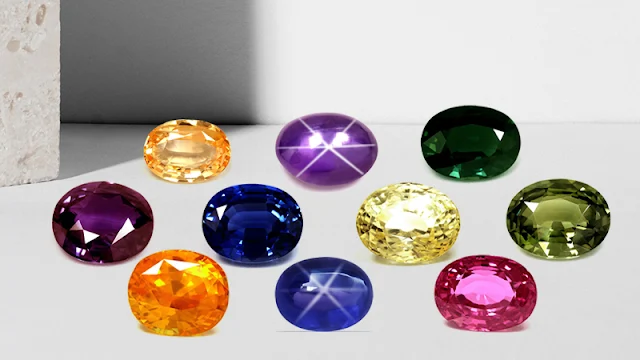Sri
Lanka today is a cradle of gemstones and more particularly sapphires, though it
produces almost every kind of gemstone. Little though you might know that the
erstwhile name of the country is Ceylon.
The History behind Ceylon Sapphire
In
1505 when the Portuguese colonized the land of this magnificent country, they
called it Ceilão. Later, the Dutch called it Zeylan and finally the English
started calling it Ceylon after taking control of the island nation in 1798.
The
country became independent in 1948 but the name Ceylon continued to be in use
until 1972 when it was officially named Sri Lanka. Now combining the two names
– the name of the country and the name of the gemstone – you get the term Natural Ceylon sapphire. The name stuck and in the industry sapphires from Sri Lanka are
lovingly called Ceylon Sapphire till this day. Though the term generally refers
to the blue variety of sapphire and sometimes star sapphire, which is another
specialty of Sri Lankan mines, it can be applied to almost every variety of
sapphire which has its origin in Sri Lanka.
The
term Ceylon Sapphire has become synonymous with the quality of sapphire in the
same way Burmese Ruby has for rubies. As such any sapphire from Sri Lanka
generally commands a premium price as compared to its similar grade counterpart
from any other part of the world.
Blue sapphire is the national gemstone of Sri Lanka and it was declared as such in 2003.
Why are Ceylon Sapphires Special?
Royalties
and celebrities have always favored Ceylon sapphires primarily because of their
color saturation & depth, exceptional clarity and size.
If
you do not already know, let us tell you that Princess Diana’s engagement ring,
which happens to be the most replicated jewelry piece in the world, also
features a Ceylone sapphire of extraordinary blue color and weighing 12 carats.
The ring is now with Princess Kate Middleton. Also, Princess Eugenie also chose
a very rare variety of salmon color sapphire called the Padparadscha sapphire gems for her engagement ring. The nearly 4 carat sapphire is also a Ceylon sapphire.
Apart
from aristocats, modern day celebs such as Victoria Beckham, Celine Dion and
many others own sapphire rings. And when you make the list of ‘who’s who’ of
the world, you want only the best and that’s precisely where Ceylon sapphires
comes into picture.
Consistent with Quality and Supply
Sri
Lanka has a very long history of gem mining and trading. According to some
estimates it goes back to 2500 years if not more. The native language of the
country is Sinhalese and long before Ceylone became Sri Lanka, it was called Ratnadweep in Sinhalese which translates
to gem island in English.
Persian
traders referred to the country as Serendip (uncanny resemblance to the word
serendipity!) probably because of the prosperity led by trade of precious
gemstones such as Ceylon sapphires.
Unlike Kashmir sapphires which were known for their silky texture due to inclusions of that kind, Ceylon sapphires were originally renowned for their medium blue hues. Moreover, Sri Lankan mines have been producing gem quality sapphires for a very long time and that too quite consistently. Over the years the quality of sapphires has also improved. Sounds miraculous, right? The primary reason behind such an extraordinary feat is perhaps the land composition of the country which is said to be 90% Pre-Cambrian rock or gem forming material.
Conclusion
Behind
the luminosity, allure and radiance of natural Ceylon sapphires is its
unique geographical disposition. The three largest faceted blue sapphires of
the world are also Ceylon sapphires- Blue Giant of the Orient (466 carats),
Logan Blue Sapphire (423 carats) and Blue Belle of Asia (400 carats). You might
also have read the news of the world’s biggest blue sapphire cluster called
‘Serendipity’ being found in 2021 in Ratnapura district in Sri Lanka. Weighing
over 300 kg, the pale blue sapphire cluster entered the Guinness Book of World
Records.
There
is no doubt that not just Ceylon sapphires but also other exotic and colorful
gems from Sri Lanka will continue to mesmerize the masses for a long time to
come.


Comments
Post a Comment